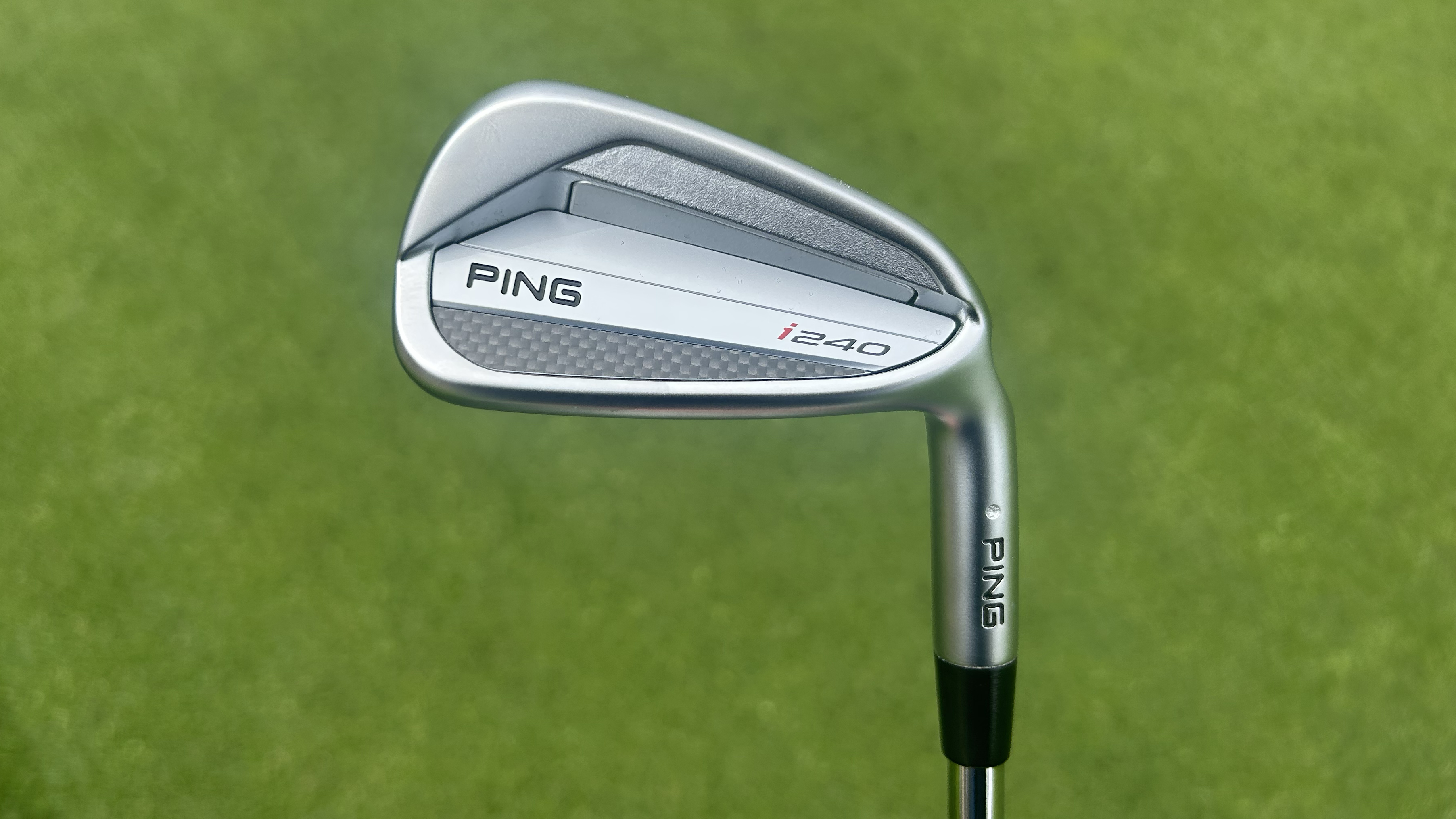
When a brand has a successful iron franchise, I eagerly anticipate the release of a new iteration to see what has been tweaked. It is a very fine line between success and failure. Change too much and you risk compromising the identity of the model, but change too little and it is difficult to convince golfers to upgrade. Irons like the i210 and i230 were a roaring success both on tour and at retail, so I was fascinated to see what the new Ping i240 iron had to offer and whether it could take its place alongside the best irons in the game.
Let’s get the technology story out of the way, which mainly focuses on weight saving and improving launch conditions. Ping has introduced a new mulit material cavity badge, which is 8.5 grams lighter than the badge that sat in the i230 cavity and this allows discretionary weight to be positioned lower to increase launch and MOI. Behind that badge is an ‘activated elastomer’ insert which supports the face, sitting behind the impact zone with its two objectives being efficient energy transfer (ball speed basically) and softening feel and audio.
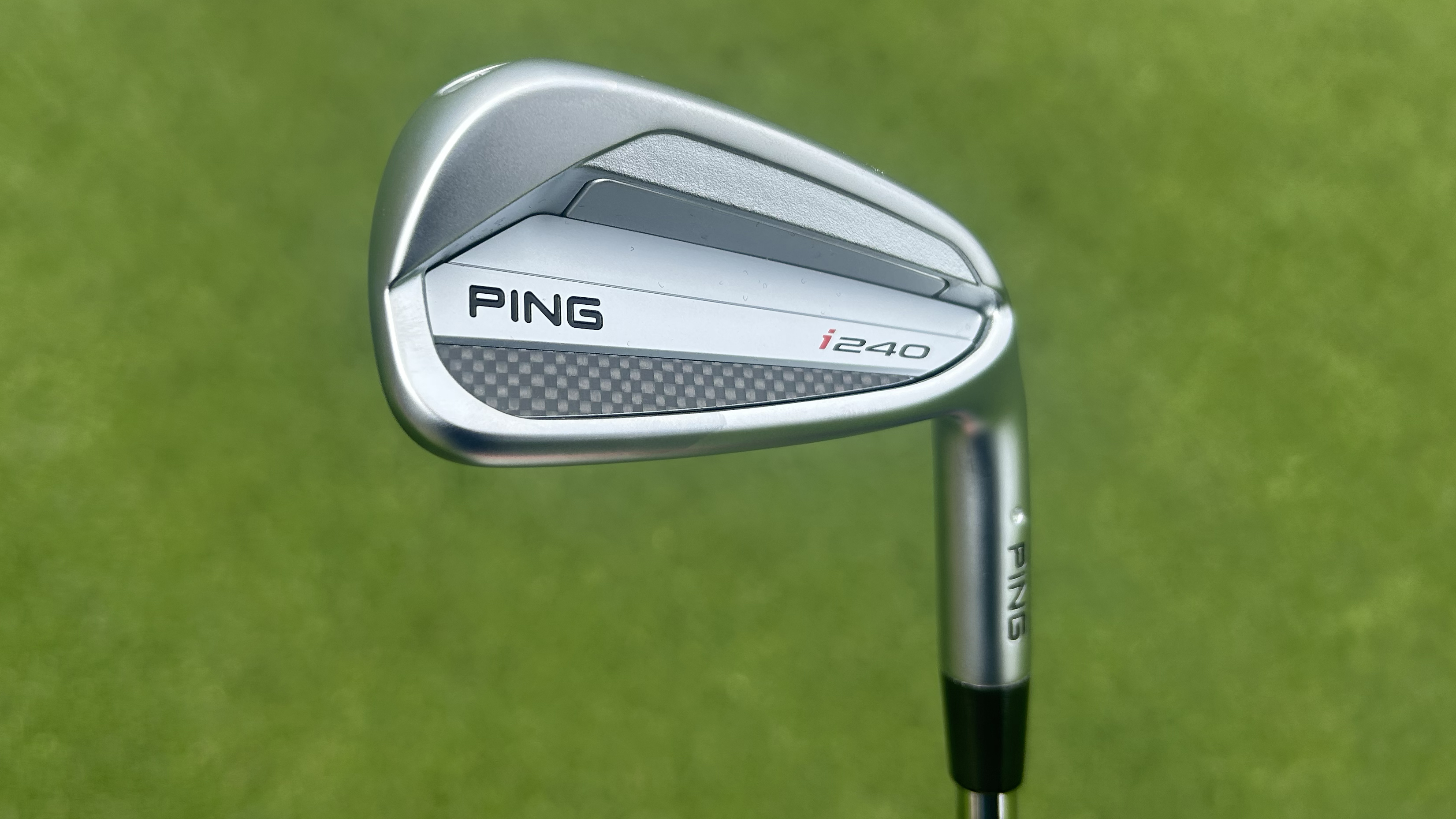
The face technology has dramatically changed from the i230, and you can clearly see the difference even with the naked eye. Ping has returned to using fewer grooves and spreading them wider apart, which came as a direct request from their tour staff to provide higher spin rates from the fairway, but lower from the rough. I am still unsure as to why they want less spin from the rough, to be honest, but I believe it is based on predictability of ball flight.
The sole hasn’t changed much, as the rounded leading edge and relatively high bounce remain, which was a popular feature of the last couple of iterations.
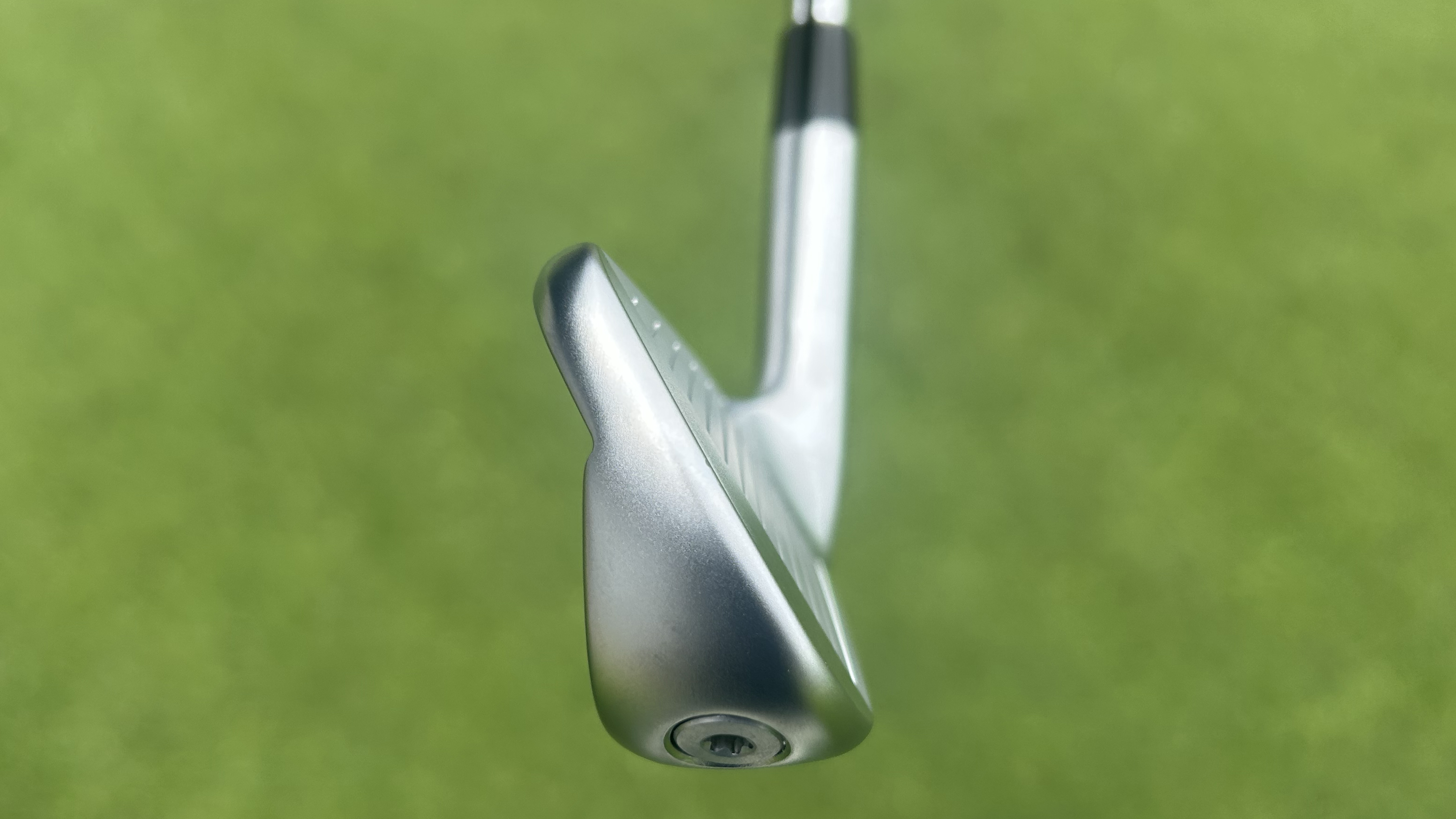
In terms of the visual, it is a little bit of a tale of two halves for me. From the ‘in the bag’ angle, I actually preferred the cleaner, more minimalist look of the i230 iron and find the carbon effect badge just a little fussy for my preferences. Also, I am generally a fan of sticking to one (or even none) colour for the branding and don’t love the ‘i’ of i240 being switched to red. As ever, though, this is entirely subjective, and many people may prefer the slightly freshened-up look of the i240.
In the playing position, the i240 ticks all of the boxes. In fact, there are very few irons on the market that cover as many bases for potential purchasers as these. The blade length is short enough to satisfy elite-level players, while the overall shaping and dimensions also provide ample confidence for slightly less accomplished players to not feel too intimidated at the prospect of finding a strike. Progressive levels of offset are nicely executed, and they just sit extremely well at address, enticing you to hit them.
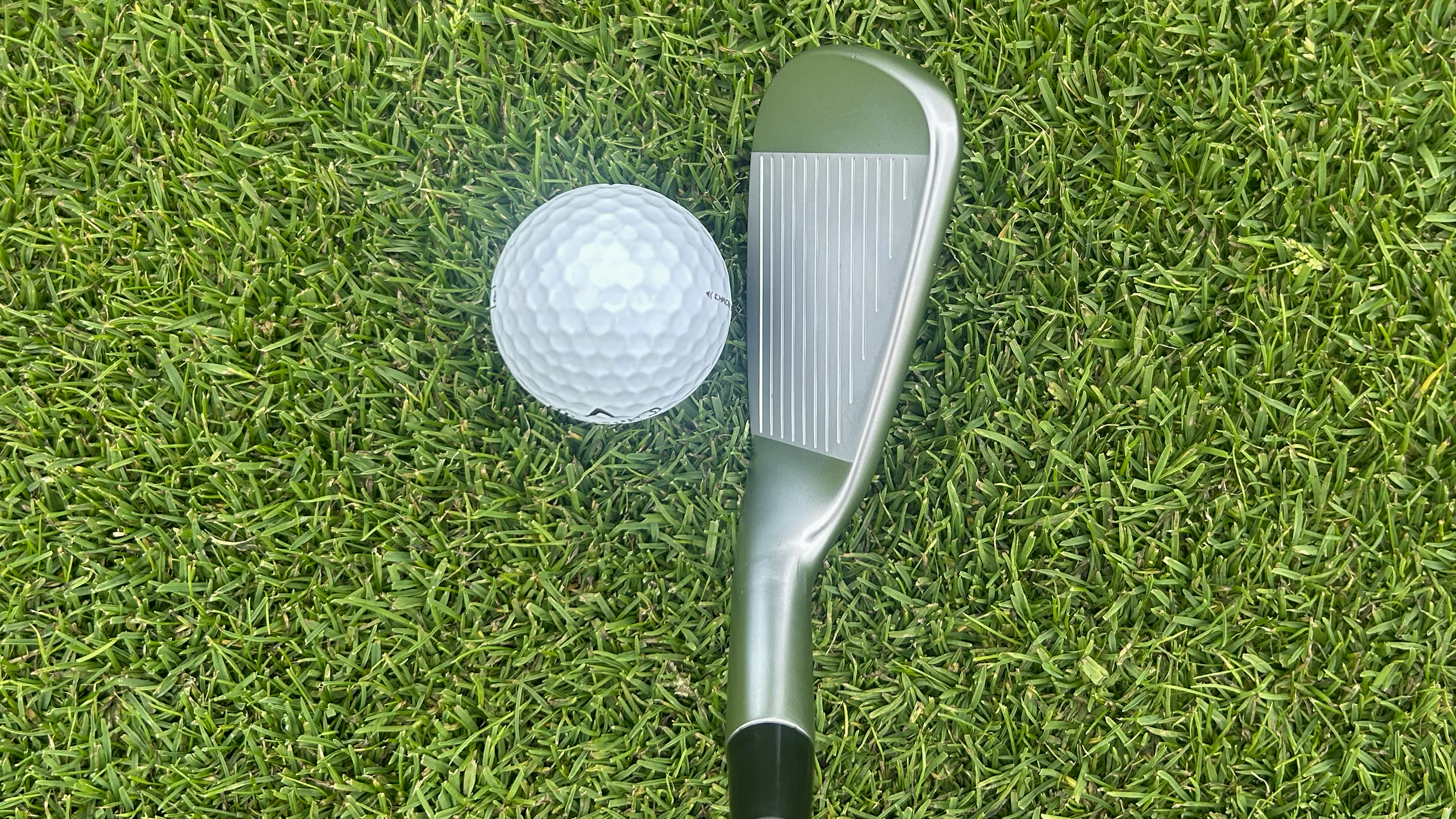
Performance-wise, Ping has absolutely achieved everything on its checklist in my opinion. Softer feel - tick. Higher launch - tick. Improved spin consistency - tick. All of this while maintaining the integrity and performance characteristics that have made this line so popular.
I was fortunate enough to be fitted for these irons on the ‘Proving Grounds’ at the Ping HQ in Phoenix, Arizona, and the session with fitter James Lee, was an absolute pleasure. From the first strike, I knew I was going to enjoy these irons with the softness of impact very much taking me by surprise. As the sole design hasn’t changed much, I knew I would enjoy the slippery turf interaction that the relatively high bounce sole offers, but once again, the launch angle was an unexpected offering. Comfortably over a degree higher than what I saw out of the i230 irons, the towering flight window was very different from what I am used to seeing, but it is very much something I could get used to.
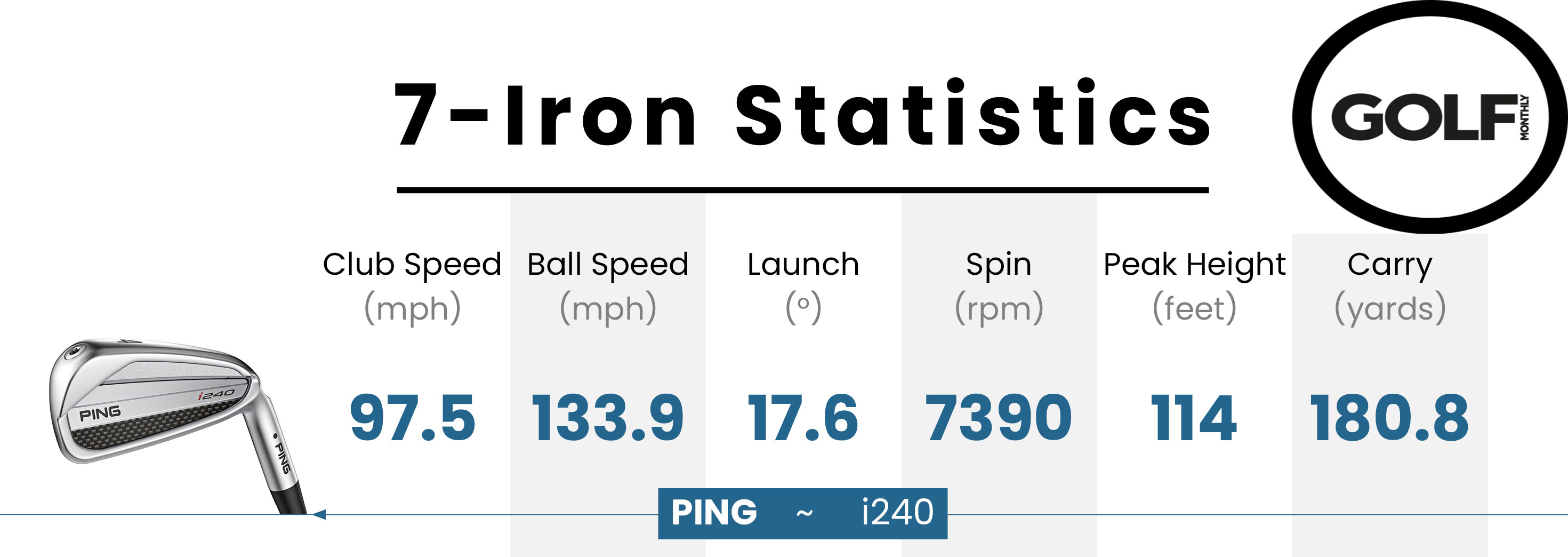
As many of you will know, Phoenix in June isn’t a great venue to test for performance in the wet, but having extensively looked at the performance of the Hydropearl 2.0 finish before and its ability to retain spin, I was very pleased to see that as a feature of i240.
I am not sure if I have ever tested an iron that I feel could go in as many different player types' golf bags very comfortably. The workability and soft feel will very much appeal to the better player, while the off-centre stability and high launch window will be enticing to those with slightly less speed and predictability of flight. The Ping i240 is a seriously strong iron that an improving mid handicap player could purchase and have it easily guide them through for a few years into the very low single digits and beyond. Impressive stuff.
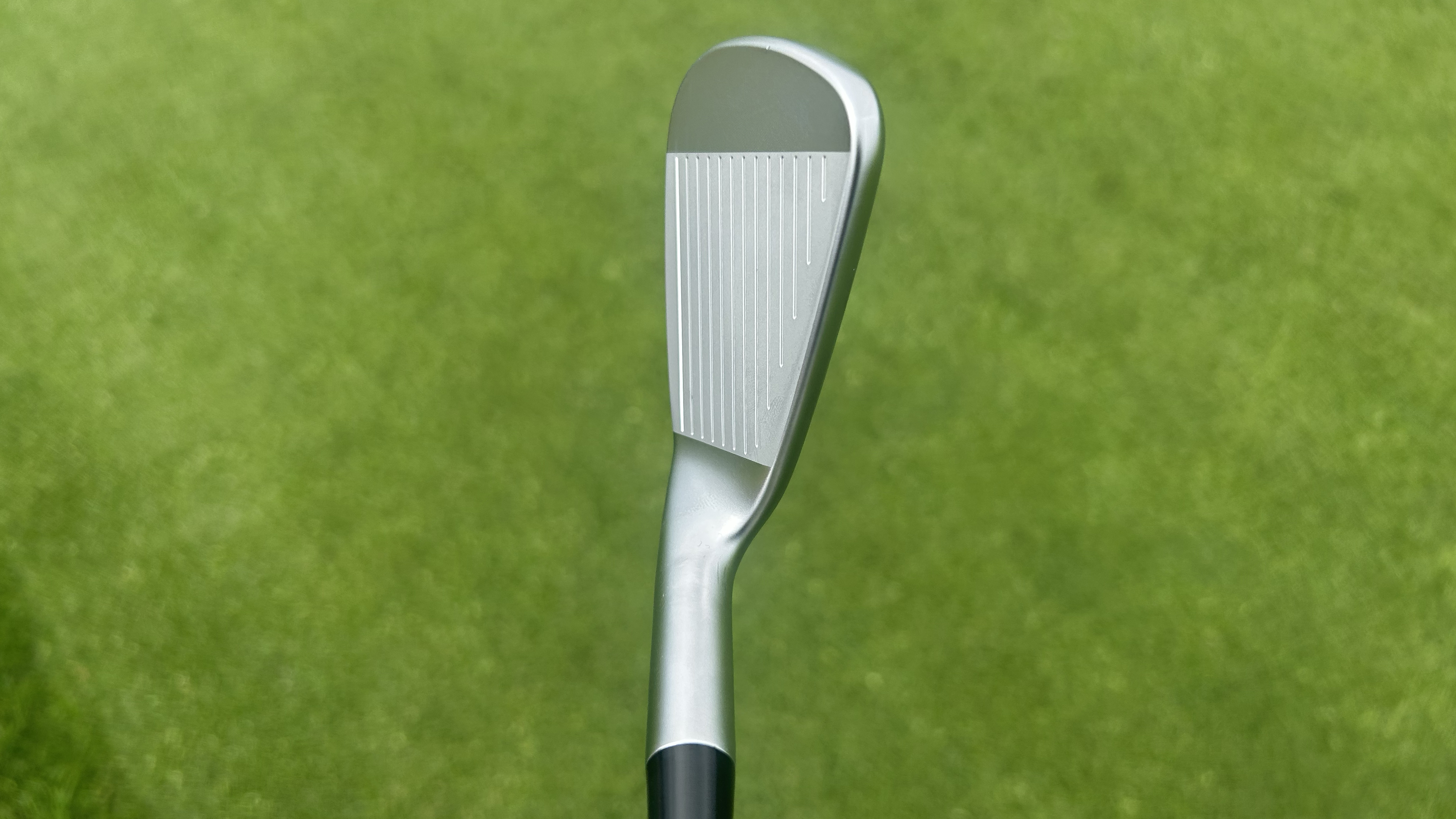
The i240 irons are available in 3-9, PW, UW in 10 color codes with Black remaining the Ping ‘standard’. They are also available in standard, Power Spec, and Retro Spec to help you dial in your flight and distance requirements.
Stock shafts: NS Pro Modus 3 Tour 115 (R, S, X) & PING Alta CB Blue (SR, R, S)
Optional stock shafts: PING AWT 3.0 (R, S, X), NS Pro Modus 3 Tour 105 (R, S, X), Dynamic Gold (S300, X100), Dynamic Gold 105 (R300, S300), Dynamic Gold 120 (S300, X100), Dynamic Gold Mid 100 (R300, S300), Dynamic Gold Mid 115 (S300, X100), KBS Tour (R, S, X), Elevate MPH 95 (R, S), UST Recoil Dart 65 (A), 75 (R, S)
Stock grip: Golf Pride 360 Tour Velvet in six sizes
U.S. MSRP: $217 per club with stock steel shaft; $232 per club with stock graphite shaft







